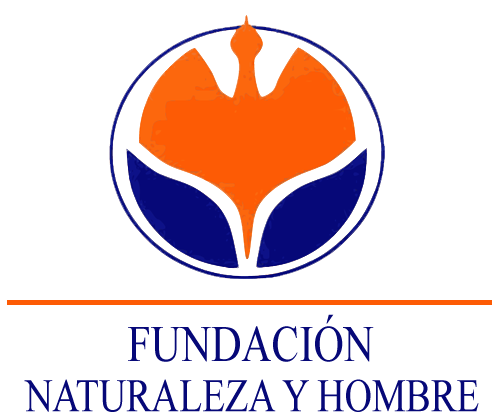- LIFE Miera
- LIFE en acción
- Recursos
- Proyectos LIFE+
- Trabajo en red
- English version
- Contacto
The beaches linked to estuaries, such as the Ría de Cubas, are surrounded by dunes and sandbanks, whose origin is due to the deposition and mobilization of sediments from the estuary, which have been washed away by the river, in this case the Miera. The shift of the dune inland is characterized by the presence of sandy blankets that can extend several kilometers, such as the Puntal de Somo. Coastal dunes are a natural formation where there is a very fragile dynamic equilibrium: a close interrelation between sand, wind, waves and vegetation. They are, without a doubt, ecosystems with a fundamental function of protection and conservation of the seaside.
The dune system of Somo and El Puntal is one of the best representations of dunes of the Cantabrian coast in which you can see the types of dunes typical of the coastal dunes:
- Primary or white dunes: they are located behind the final line of the beach or the embryonic dunes. They are called white dunes due to their partial coverage of vegetation and the greatest exposure to wind. They have a mobile character, their configuration varies in winter and summer due to the dynamics caused by the waves and coastal storms. They are dominated by the European marram grass (Ammophila arenaria) and by the sand couch-grass (Elymus farctus).
- Secondary or gray dunes: located behind the primary dunes. In these the conditions for the growth of the plants are better: they are less exposed to the wind to the salt, the pH of these dunes is more reduced, between 7.5 and 6.5. Therefore, the number of species increases, covering in some areas totally the sandy surface.
- Tertiary or forested dunes: They are located behind the secondary dunes, often completely covered with shrubs in the closest area to the sea and forest as climax vegetation of the temperate zones. In Cantabria the typical vegetation of the Tertiary dunes is the holm oak and its accompanying undergrowth, however in the middle of the 20th century a good part of these dunes were planted with maritime pine (Pinus pinaster), with the aim of stabilizing the dunes and protecting villages from winds, so the ecosystem was drastically transformed.
A fragile ecosystem
The Somo dune system, from the island of Santa Marina to Punta Rabiosa, suffers intense use as a beach recreation area for countless inhabitants of the metropolitan area of the Bay of Santander, as well as national and international tourism. All this comes a highly negative effect on the dune ecosystem. The dunes are affected by an intense trampling and erosion of tourists who pursue access to the bathing area through the dune system without any precaution.
The LIFE Miera Project focuses its activities linked to the Dunas del Puntal de Somo to the elimination of species of invasive flora that hinder, or even prevent, the development of the typical species of the dune systems. Thus, the black locust (Robinia pseudoacacia), the evening primrose (Oenothera sp.), the eastern baccharis(Baccharis halimifolia) and the pampas grass (Cortaderia selloana) have been eliminated.
In addition, several training and awareness-raising activities have been carried out, among which the campaign to raise awareness about the invasive flora species that has had the publication of an informative brochure on the methods of elimination of the main species of invasive flora presents in theMiera basin and the gathering of 5 workshops of Ecological Gardening in different towns and villages of the middle and lower course of Miera River. These workshops are focused on develop awareness among local population on how to prevent the appearance of invasive species in our gardens and how to gardening in a more responsible and environmental friendly way.
On the other hand, given that the Puntal de Somo has an important tourist activity during the summer, different awareness campaigns have been carried out for the care of the Natura 2000 area by tourists and inhabitants, and developed several actions of dune restoration with young people in the area through the activity of Pequesurf of the municipality of Ribamontán al Mar.
Related actions: C5, D1, E2 and E3.
OFICINAS CENTRALES FNYH
Dirección: Av. De España Nº 25 Entlo, 39610 El Astillero Cantabria
Tlf: 942 55 91 19 / 679181483
fundacion@fnyh.org
DELEGACIÓN PARA PORTUGAL
Dirección: Rua do Conde de Redondo 8-5º dt 1150-115 Lisboa Tlf: (++351) 919 784 981 crc@erena.pt
CASA DE LA NATURALEZA-MARISMAS DE ALDAY
Dirección: C/ Alday (junto al parking de Valle Real), Maliaño, Cantabria
Tlf: 679 181 472
educacionambiental@fnyh.org
DELEGACIÓN PARA SUDAMÉRICA
Iguazú iguazuconservation@fnyh.org
ECOMUSEO-FLUVIARIUM DE LIÉRGANES
Dirección: C/ Camino Real, 9, 39722 Liérganes, Cantabria
Tlf: 942 52 81 96
fluviarium@fnyh.org
DELEGACIÓN PARA ÁFRICA
Tanzania fundacion@fnyh.org
VIVERO Y CENTRO ETNOBOTÁNICO EL PENDO
Dirección: 39609 Camargo, Cantabria
Tlf: 942 25 88 08
vivero@fnyh.org

ESTACIÓN BIOLÓGICA CAMPANARIOS DE AZABA
Dirección: Camino de La Alamedila, SN 37497 Espeja, Salamanca
Tlf: 923481401
campanarios@fnyh.org
